Build Quality
As we already know the FSP Hydro PTM PRO 12ooW features a single 135mm fan design that is used in the same vein as 120mm fans in that these can provide for quiet cooling environments due to the ability to move a larger volume of air at slower speeds than a smaller diameter fan. The 135mm fan is just about the largest diameter fan we are likely to see in ATX power supplies given the physical constraints of the form factor. While great for quiet computing environments the key criteria in our evaluation is whether or not the cooling solution is sufficient, not necessarily its sound output level or form factor, although we certainly listen for offending units.
External Build Quality
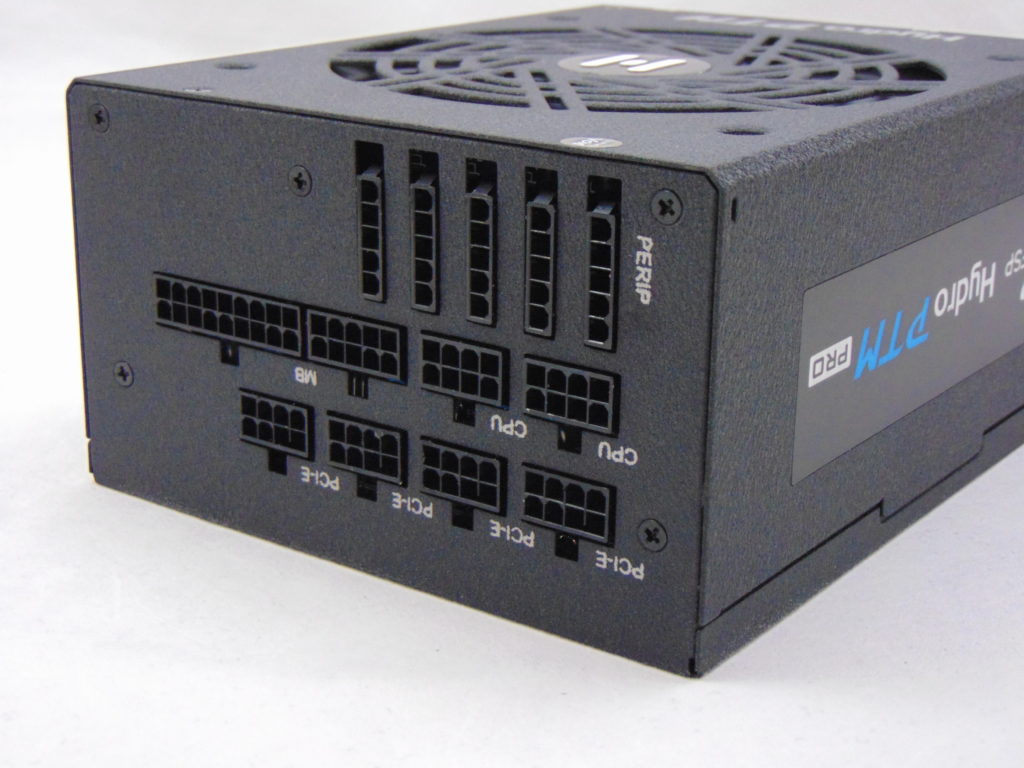
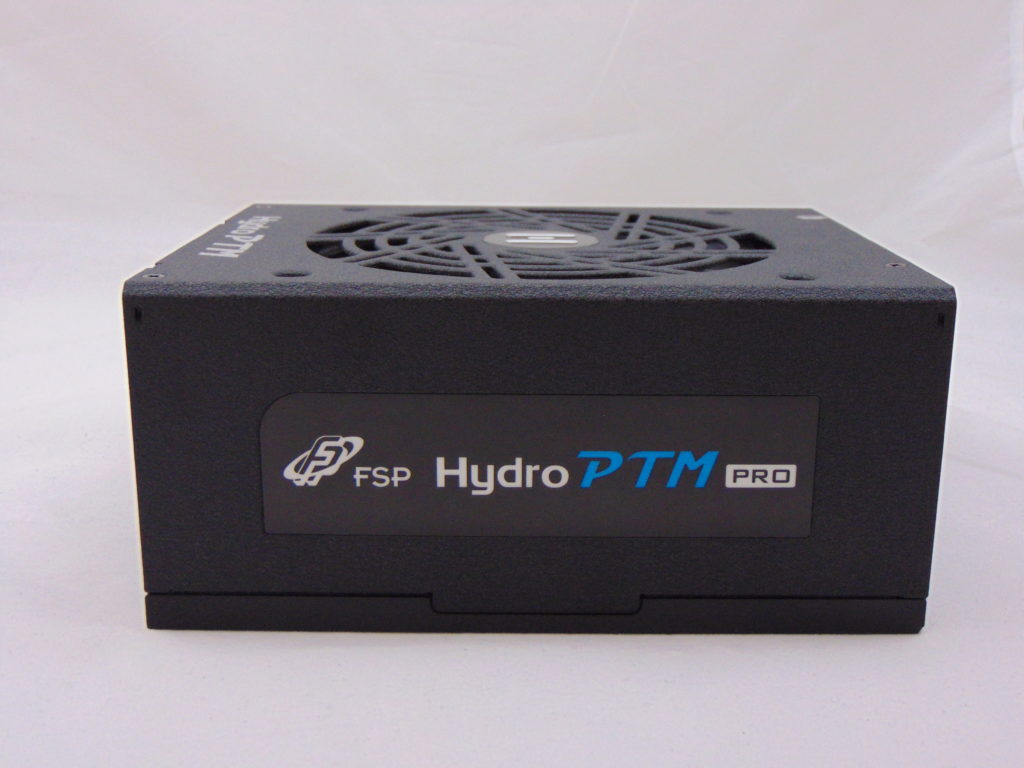
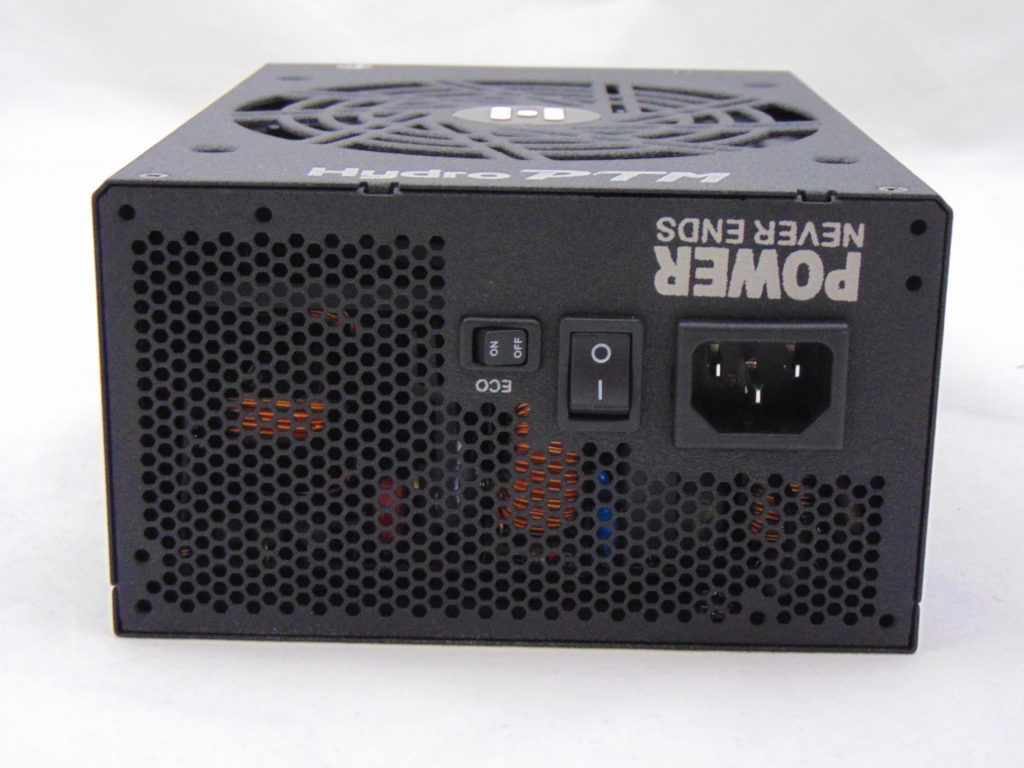
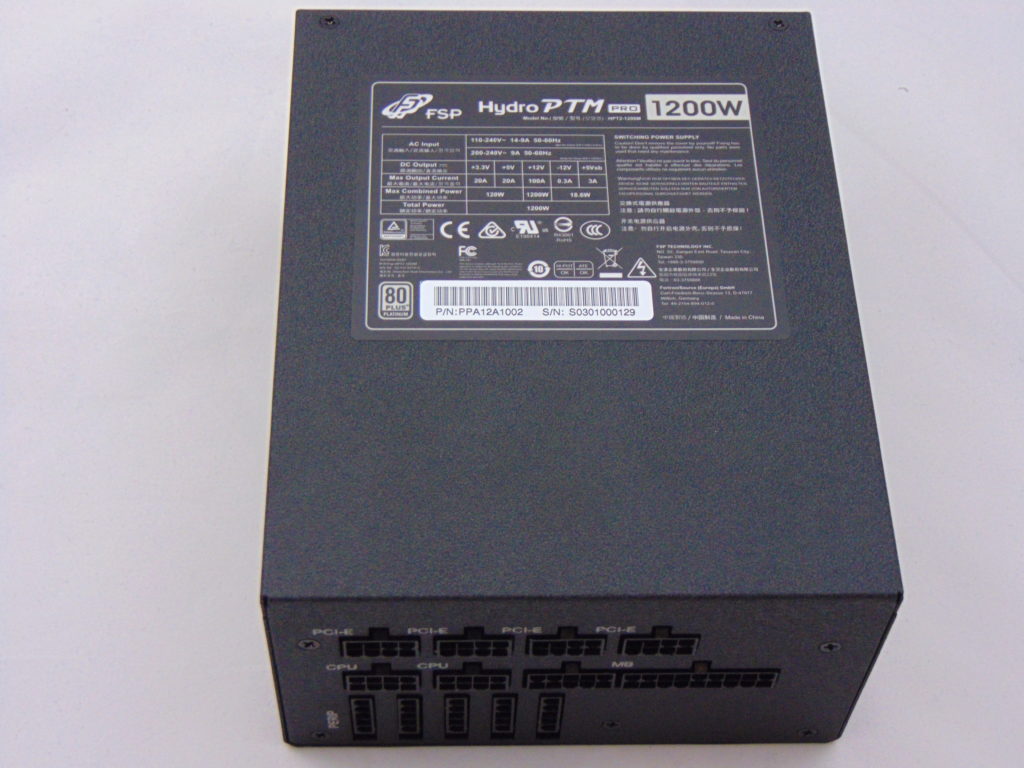

The external build of the FSP Hydro PTM PRO 12ooW follows in form that of many other ATX12v/EPS power supplies (including FSP’s own, earlier, Hydro series units). The finish we see today is a highly textured black, that should be durable, and the unit carries the Hydro PTM PRO 12ooW branding. The branding is, however, applied via side stickers for the most part. The modular interface is labeled well in a nice printed on finish. Other than that, the rear of the unit features an eco switch labeled “ECO” (which changes the fan controller behavior), and there is a printed slogan on of “Power Never Ends” (the Roman Empire would like to have a word with FSP). Lastly, the fan guard is probably, simultaneously, the most interesting and also the most indecipherable part of the external build quality once more.
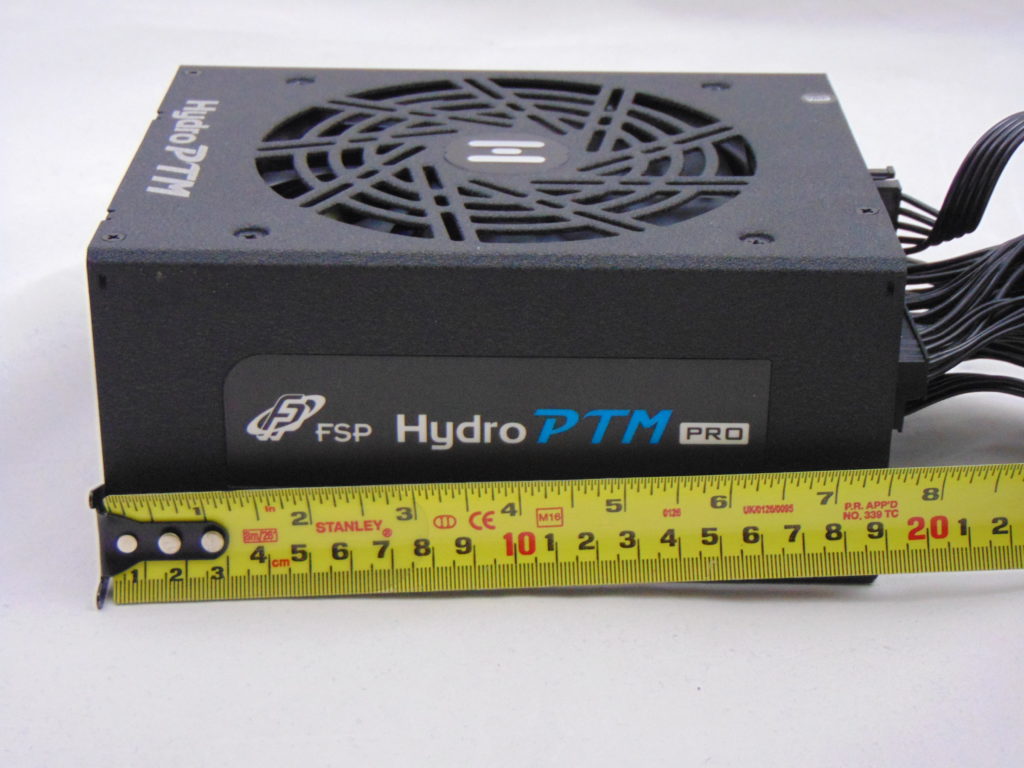

The FSP Hydro PTM PRO 12ooW comes in at a total length of ~7 1/2 inches while the cables come in at a length of ~18″ to 28″ to the first or only connector. Additionally, the cables are all the FlexForce style cables.
Internal Build Quality

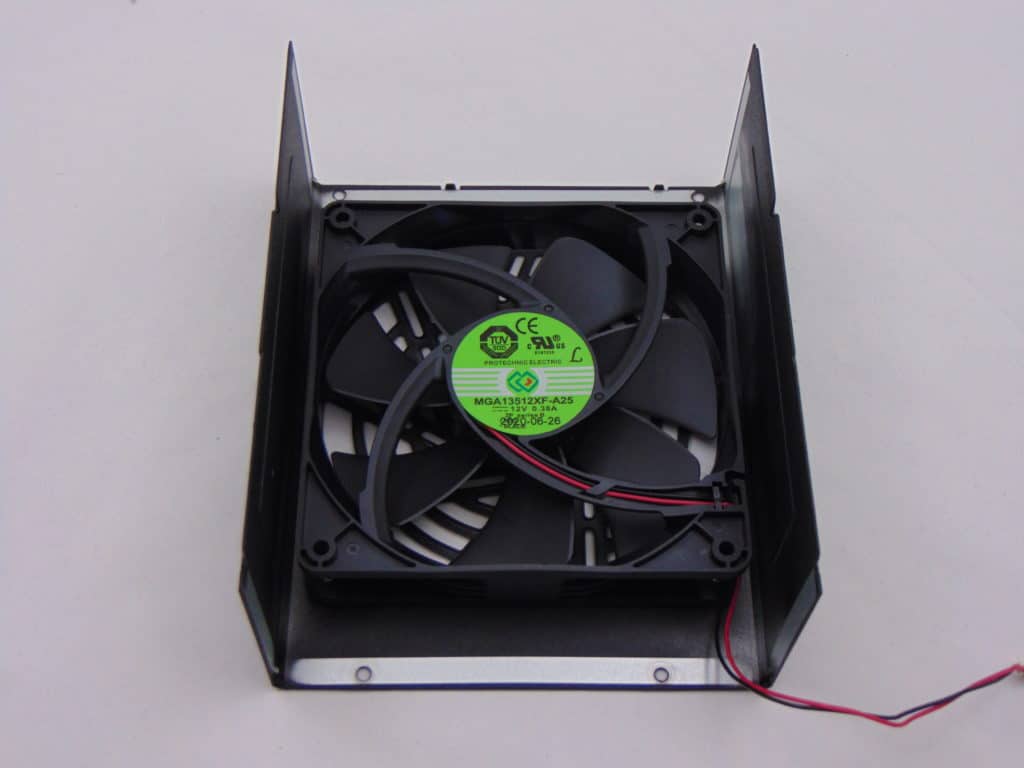
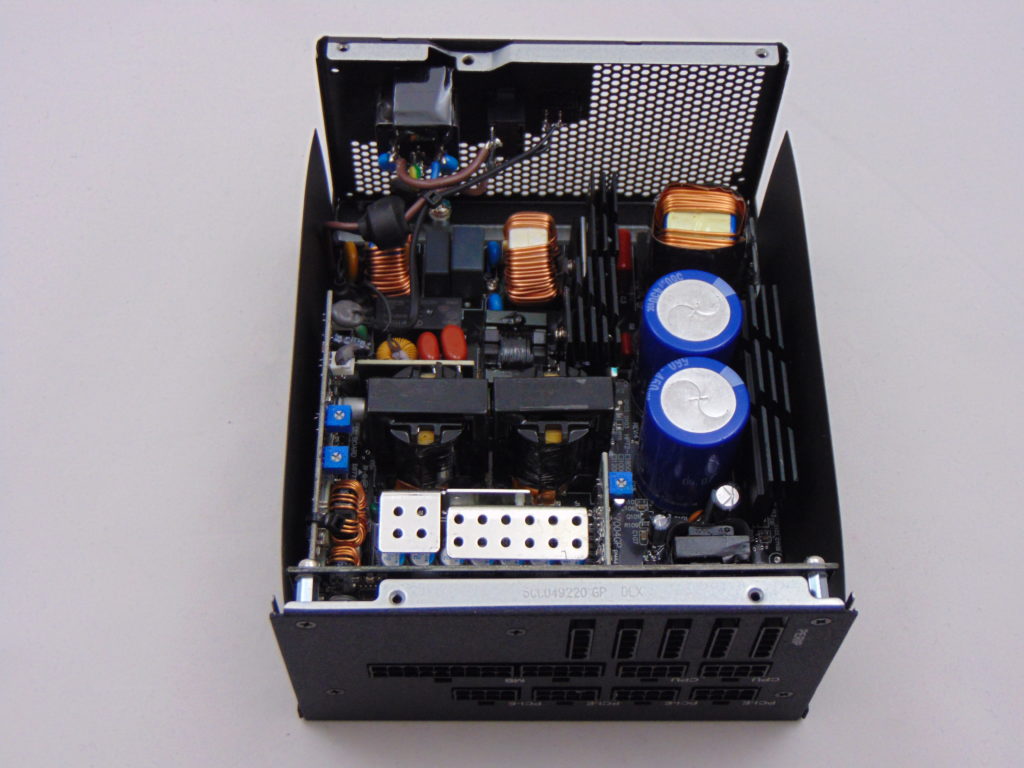
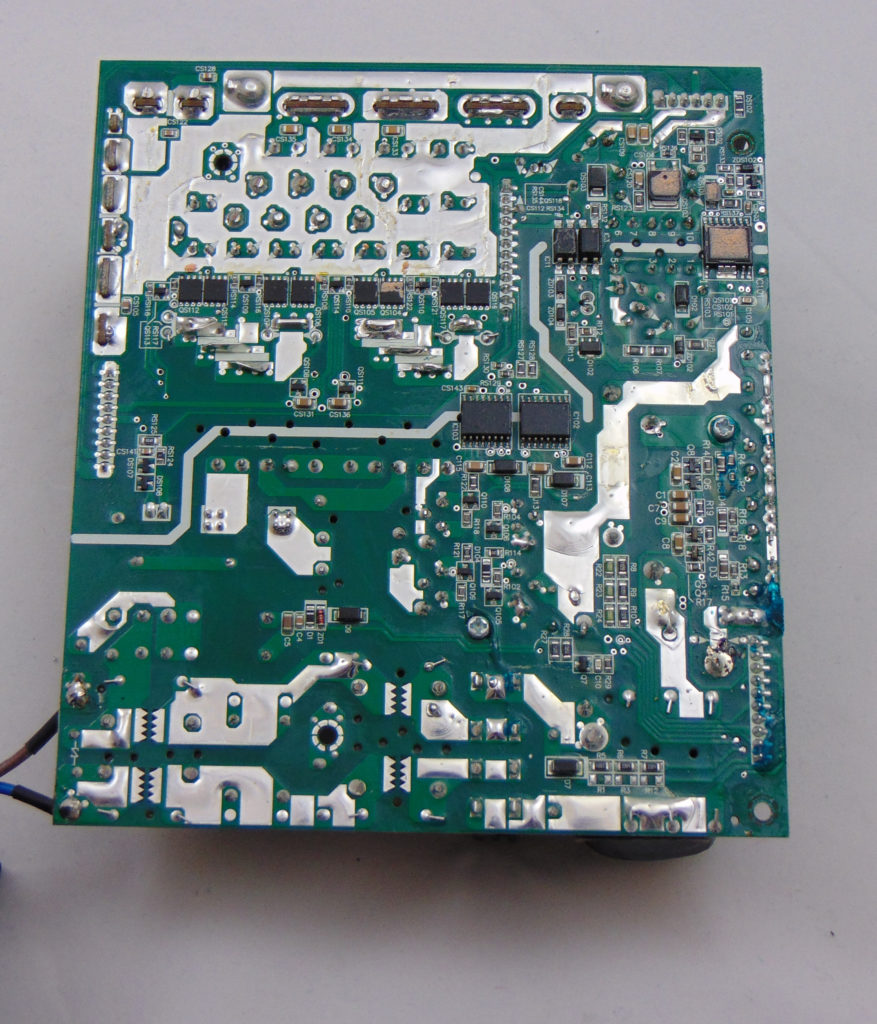
Once we open the top of the Hydro PTM PRO 12ooW. The topology is a full-bridge resonant LLC primary and a secondary where we have synchronous rectification with DC-DC VRMs for the minor rails. The heatsink layout is very sparse with what appears to be just four small heatsinks (consisting of a mix of black finned heatsinks and some decidedly less upscale looking bare aluminum ones with holes punched in them) installed today. The fan paired with these heatsinks is a 135mm FDB fan provided by Protechnic and rated at 0.38A at 12v. When we look at the back of the PCB, we see the 12v MOSFETs here using the housing as an additional heatsink. The soldering here is not nearly as good as what we have seen recently from FSP which is curious. It is not terrible, but it is also not very good.
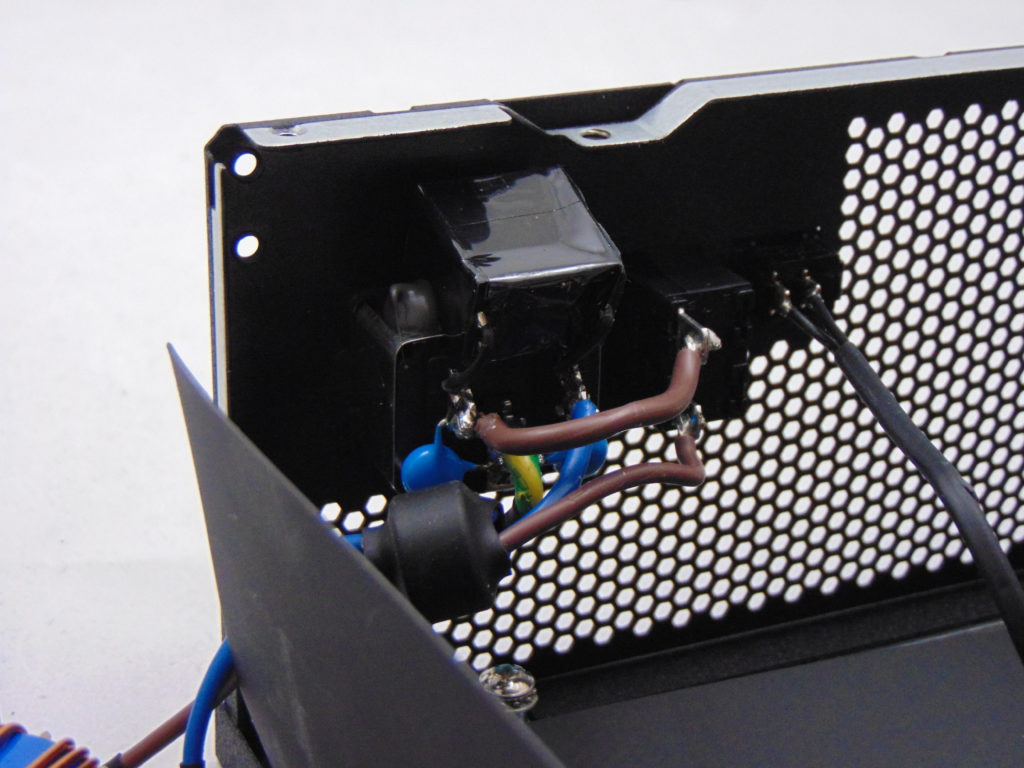
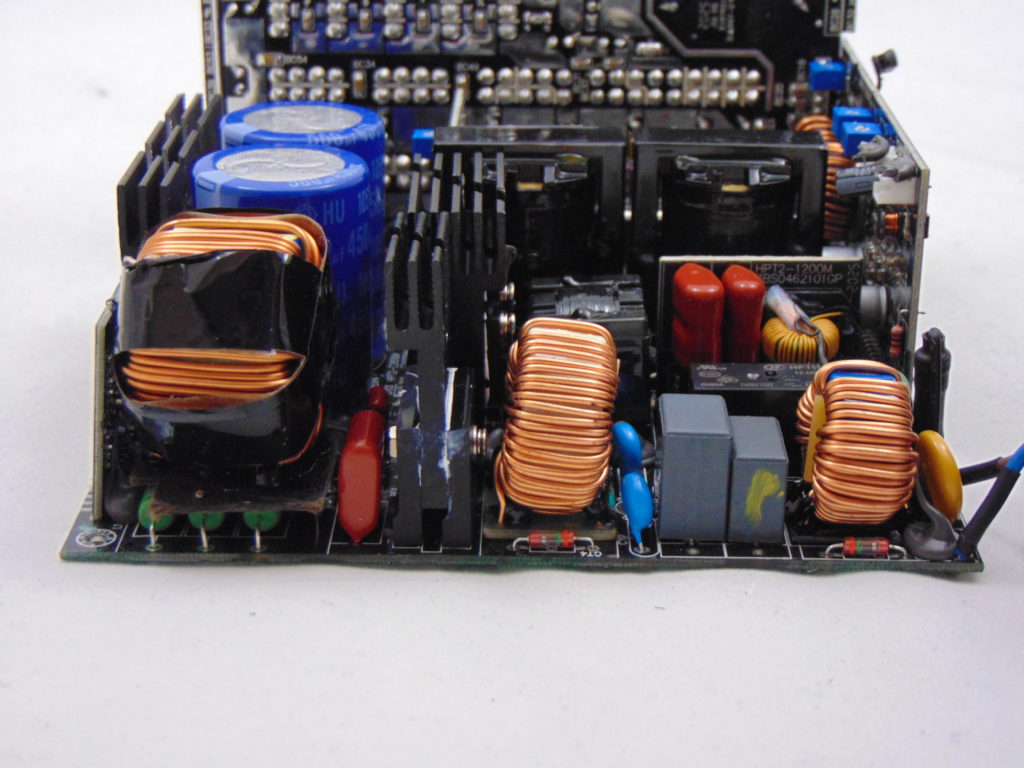

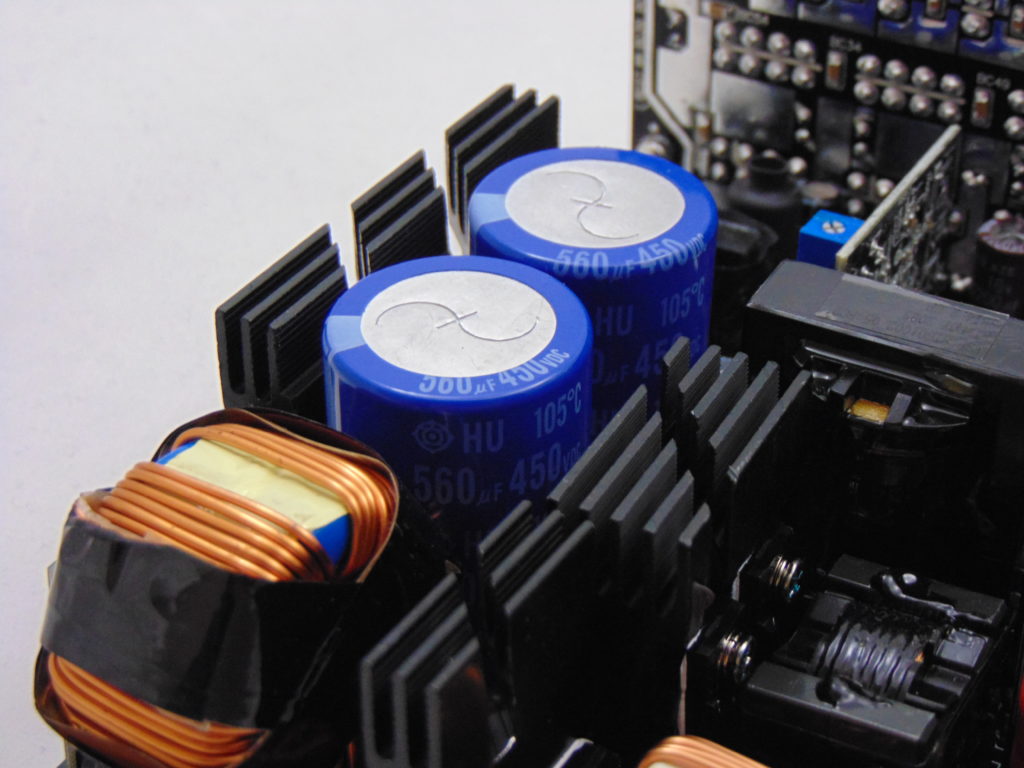
On the primary side, the Hydro PTM PRO 12ooW input filtering begins up on the housing itself with some X capacitors and Y capacitors and then trails onto the main PCB. The bridge rectifiers are next and they are attached to a heatsink in a sandwich arrangement. As we move around to the primary side proper, we find a coil followed by the APFC power components on a heatsink. Also located here, we find the main input capacitors which are provided by Hitachi. These Japanese capacitors are rated at 450v 560uF 105C. Lastly, the main switchers for the full-bridge LLC primary are attached to the ridged heatsink located towards the middle of the unit.
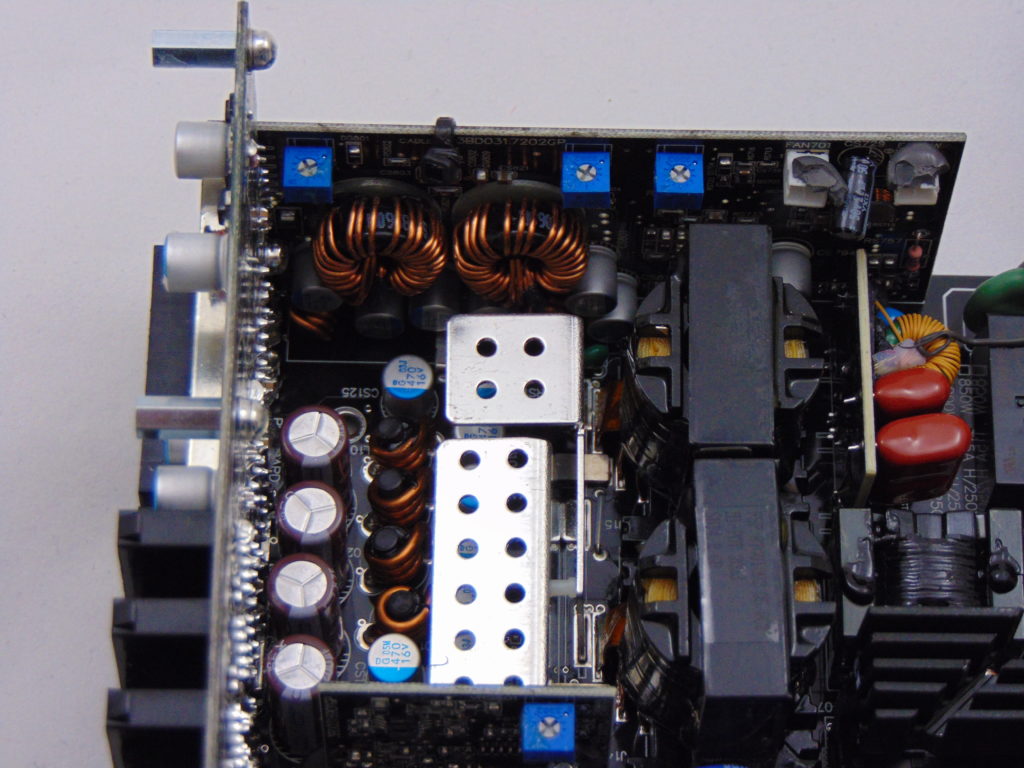

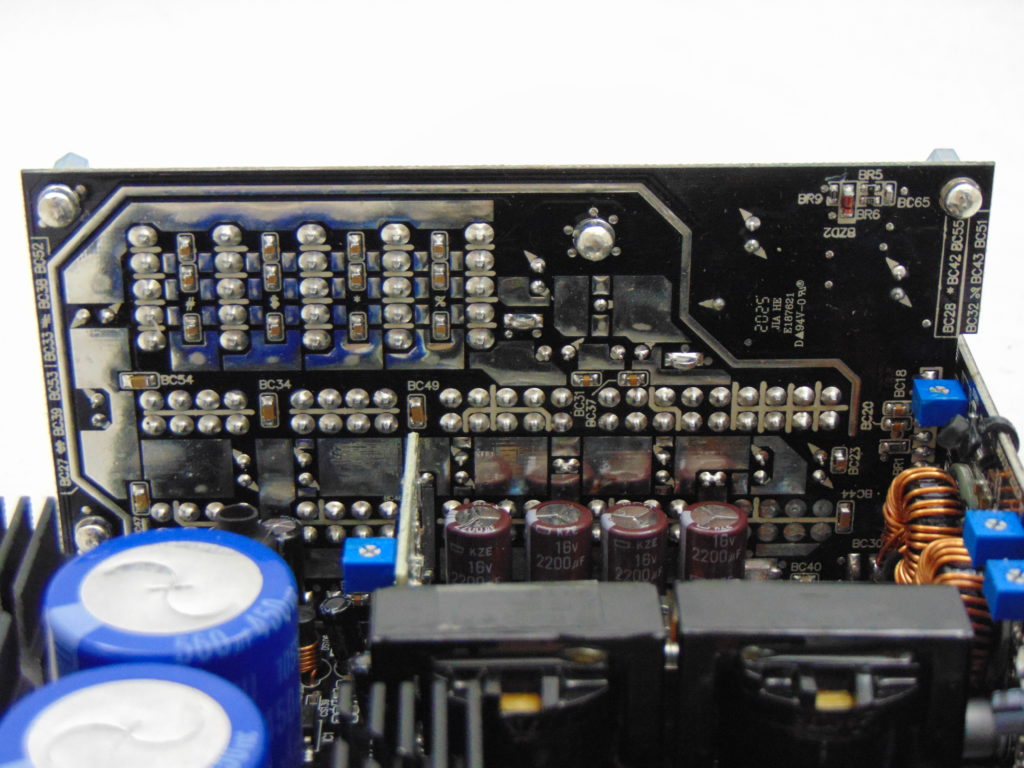
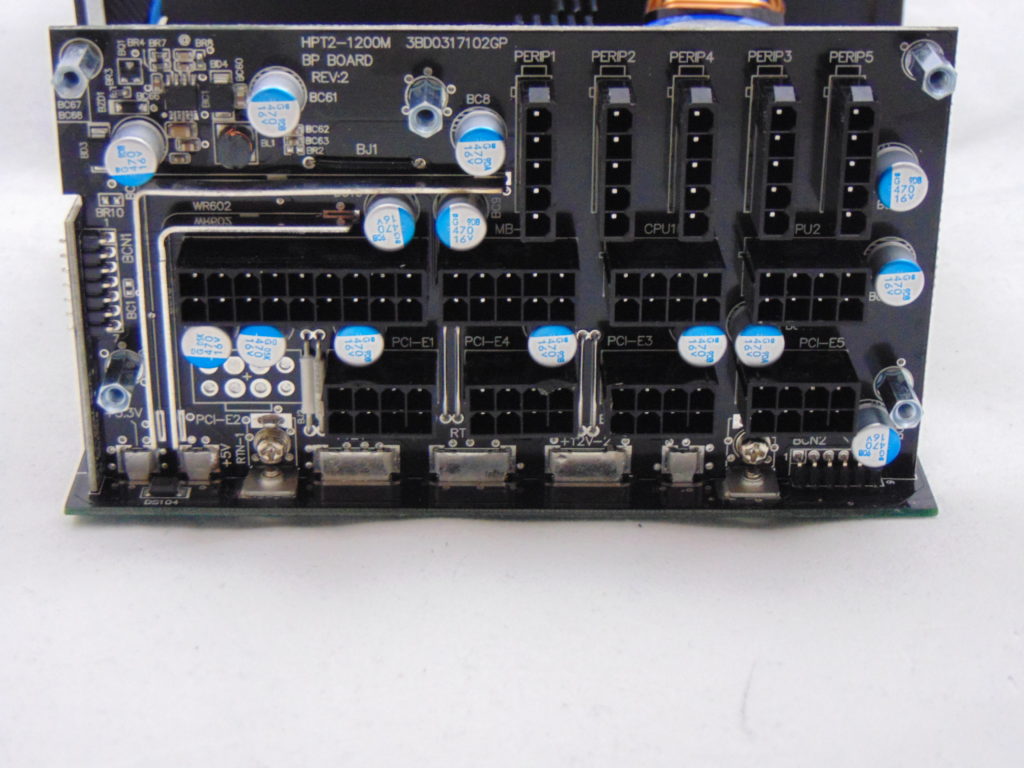
The secondary side of this unit is much more crowded than the previous FSP unit we saw due to a number of factors. Part of the reason is the use of two main transformers which take up a significant amount of real estate. Another part is the large PCB which houses the protection IC, and the DC-DC VRMs. Associated with these VRMs are a few solid Nippon Chemi-con capacitors (additionally, there are a few small solid and standard Nippon Chemi-con capacitors scattered throughout the secondary in various places and roles). We also find some medium sized (but kind of not great looking) heatsinks that are helping to cool 12v power components in this synchronous rectification design. Moving on to the modular PCB, we see the modular connectors as well as several capacitors provided by Nippon Chemi-con. The PCB construction looks to be competently executed.
Build Quality Summary
Today’s FSP Hydro PTM PRO 12ooW is the second ATX12v/EPS power supply we have seen from FSP here at TheFPSReview and it starts off well but perhaps not as well as the previous FSP unit we saw. Similar to FSP’s previous Hydro offering, the exterior of this unit is well built, and it looks like most modular overhead fan units these days. It does feature a more textured finish than most and an interesting fan guard to make it stand out just a bit. Some of the actual branding approaches are a bit lower down the quality scale but, ultimately, this does not affect the unit in a major way. Then, just to spice things up again, we see that all of our cabling is the flat FlexForce style cabling.
When we move to the interior build quality, we see a modern design that has good execution. The component selection is excellent as we see Nippon Chemi-con and Hitachi standard capacitors as well as Nippon Chemi-con solid capacitors today. The thing is, there is this bit of nagging in the back of the head that this unit is not quite as good as the Hydro PRO G 1000W in the way the build feels. So, let’s move on now to the load tests and see if that means anything today!
